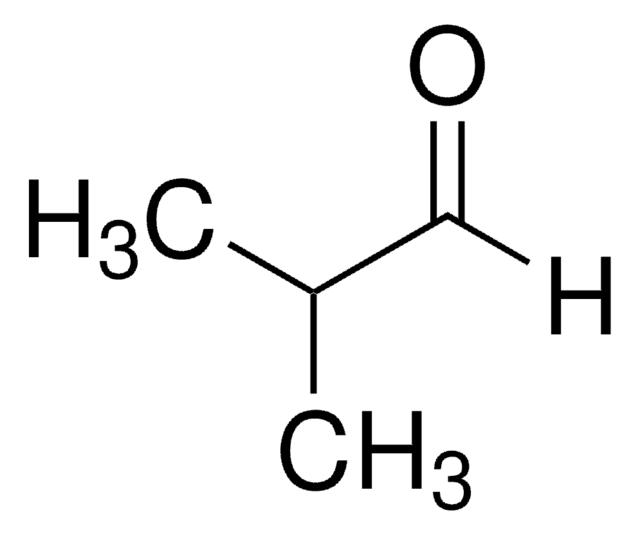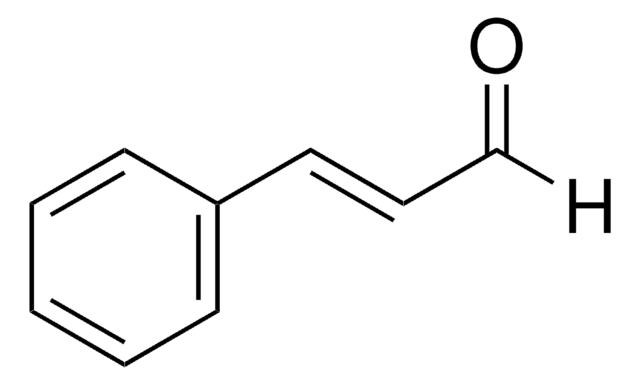Kluczowe dokumenty
About This Item
Polecane produkty
klasa czystości
natural
Poziom jakości
zgodność regionalna
FDA 21 CFR 117
gęstość pary
2 (vs air)
ciśnienie pary
184 mmHg ( 20 °C)
Próba
≥97%
Postać
liquid
granice wybuchowości
13.2 %
charakterystyka ekologicznej alternatywy
Less Hazardous Chemical Syntheses
Use of Renewable Feedstocks
Learn more about the Principles of Green Chemistry.
sustainability
Greener Alternative Product
kolor
clear colorless
współczynnik refrakcji
n20/D 1.359 (lit.)
tw
56 °C/760 mmHg (lit.)
mp
−94 °C (lit.)
gęstość
0.791 g/mL at 25 °C (lit.)
Zastosowanie
flavors and fragrances
Dokumentacja
see Safety & Documentation for available documents
alergen pokarmowy
no known allergens
format
neat
kategoria ekologicznej alternatywy
, Aligned
Organoleptyczne
apple; ethereal
ciąg SMILES
CC(C)=O
InChI
1S/C3H6O/c1-3(2)4/h1-2H3
Klucz InChI
CSCPPACGZOOCGX-UHFFFAOYSA-N
Szukasz podobnych produktów? Odwiedź Przewodnik dotyczący porównywania produktów
Opis ogólny
Zastosowanie
Oświadczenie o zrzeczeniu się odpowiedzialności
Hasło ostrzegawcze
Danger
Zwroty wskazujące rodzaj zagrożenia
Zwroty wskazujące środki ostrożności
Klasyfikacja zagrożeń
Eye Irrit. 2 - Flam. Liq. 2 - STOT SE 3
Organy docelowe
Central nervous system
Zagrożenia dodatkowe
Kod klasy składowania
3 - Flammable liquids
Klasa zagrożenia wodnego (WGK)
WGK 1
Temperatura zapłonu (°F)
1.4 °F - closed cup
Temperatura zapłonu (°C)
-17.0 °C - closed cup
Środki ochrony indywidualnej
Eyeshields, Faceshields, Gloves
Wybierz jedną z najnowszych wersji:
Masz już ten produkt?
Dokumenty związane z niedawno zakupionymi produktami zostały zamieszczone w Bibliotece dokumentów.
Klienci oglądali również te produkty
Nasz zespół naukowców ma doświadczenie we wszystkich obszarach badań, w tym w naukach przyrodniczych, materiałoznawstwie, syntezie chemicznej, chromatografii, analityce i wielu innych dziedzinach.
Skontaktuj się z zespołem ds. pomocy technicznej





